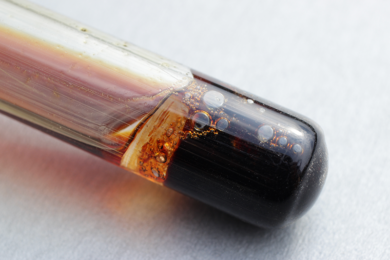Global iron ore and base metals mining major Vale recently gave its 2023 XXIII Investor and Analyst Tour of its Northern System operations, which is its high volume iron ore hub in the state of Pará, Brazil and which includes three main mining areas: Serra Norte, Serra Leste, and S11D. It also includes its Morro do Azul manganese operations. The presentation was given on September 5 by Marcello Spinelli, EVP Iron Ore Solutions; Carlos Medeiros, EVP Operations; and Gustavo Pimenta, CFO. Long term Vale wants to ensure its premium iron ore portfolio can support the transition to net-zero emission steelmaking.
At Serra Norte, the world’s largest iron ore mining area, the N4W, N4E, N5 and Morro1 mines are currently operating – 12 open pits in total – generally referred to together as the Carajas mining complex, with N3 due to come online in 2025 and beyond that N1/N2 after 2030. Serra Norte produces 140 Mt/y and is distinct from the other two Northern System mining areas in Para – Carajas Serra Sul or S11D, one of the world’s largest in-pit crushing and conveying mines with four separate truckless systems, and Serra Leste in the municipality of Curionopolis. IM recently got some additional direct insight into the major mining related investments Vale is making at S11D, as well as an update on its automation progress both at its Northern System operations but also elsewhere such as at Brucutu and Itabira mines in its Southeastern System.
At Carajas Serra Sul (S11D) capacity is now 90 Mt/y but a major expansion is underway known as Serra Sul 120, referring to the fact that the project will see production reach 120 Mt/y by 2026. Work has now reached 51% physical progress. The project consists of the opening of new mining areas with the installation of a semi-mobile crusher in Area 5, the implementation of new processing lines, the expansion of storage areas and mine equipment, the expansion of the maintenance workshop, as well as other new buildings and works. The project also includes the duplication of the long-distance belt conveyor, parallel to the current one and with the same capacity. With a length of 9 km, the conveyor is responsible for transporting iron ore from the mine to the plant, given that it was built in an area outside the Carajás National Forest, and ensures less interference with the environment. The total investment for Serra Sul 120 stands at about US$1.5 billion.
With a separate investment of US$755 million, the Compact Crusher Project at S11D will enable the processing of various minerals, including harder jaspilite and transition material. The scope involves the implementation of primary crushing, secondary crushing and a belt conveyor system with a capacity of 45 Mt/y. In addition to mine equipment, support facilities, new substations and a drainage system. An investment in maintaining the existing operation, the project for now is 13% complete and when finished will give S11D more flexibility and should be operational in H2 2026. Jaspilite is a hard rock from the Carajas formation containing bands of jasper and iron minerals with 42% average Fe and 36% average SiO2. It is a challenge due to its high abrasiveness and compressive strength.
On autonomous fleet progress, Vale has reached 87 autonomous equipment units in operation, of which 82 are in Brazil. This includes 14 Caterpillar haul trucks in Brucutu and 14 Komatsu haul trucks in Carajas. The Carajas trucks are Komatsu 930E-ATs using its FrontRunner technology & Modular DISPATCH fleet management system while the Brucutu units are Caterpillar 793F CMD models using Command for hauling, part of its MineStar™ suite of technology. Onto drill rigs, and it now has 13 auto drilling rigs in Itabira, two in Brucutu and eight in Carajas. These are mainly a mix of existing Epiroc and Caterpillar drills that have been retrofitted using FLANDERS ARDVARC technology. In addition, Vale has 18 autonomously operated stockyard machines in Sao Luis and 13 in Carajas. There are also five autonomous stockyard machines in operation in Malaysia. These are mainly rail-mounted bucketwheel stacker-reclaimers.
A final note on mining trucks and Vale’s decarbonisation strategy. The miner was originally looking at deploying a trolley assist line in Carajas on which initial installation had been earmarked for 2023 – however – the company told IM that its outlook has now changed and that it is instead focused on developing alternative fuels for its mines and railways, such as green ammonia for locomotives and ethanol for haul trucks, as well as testing electric batteries for smaller equipment units.










